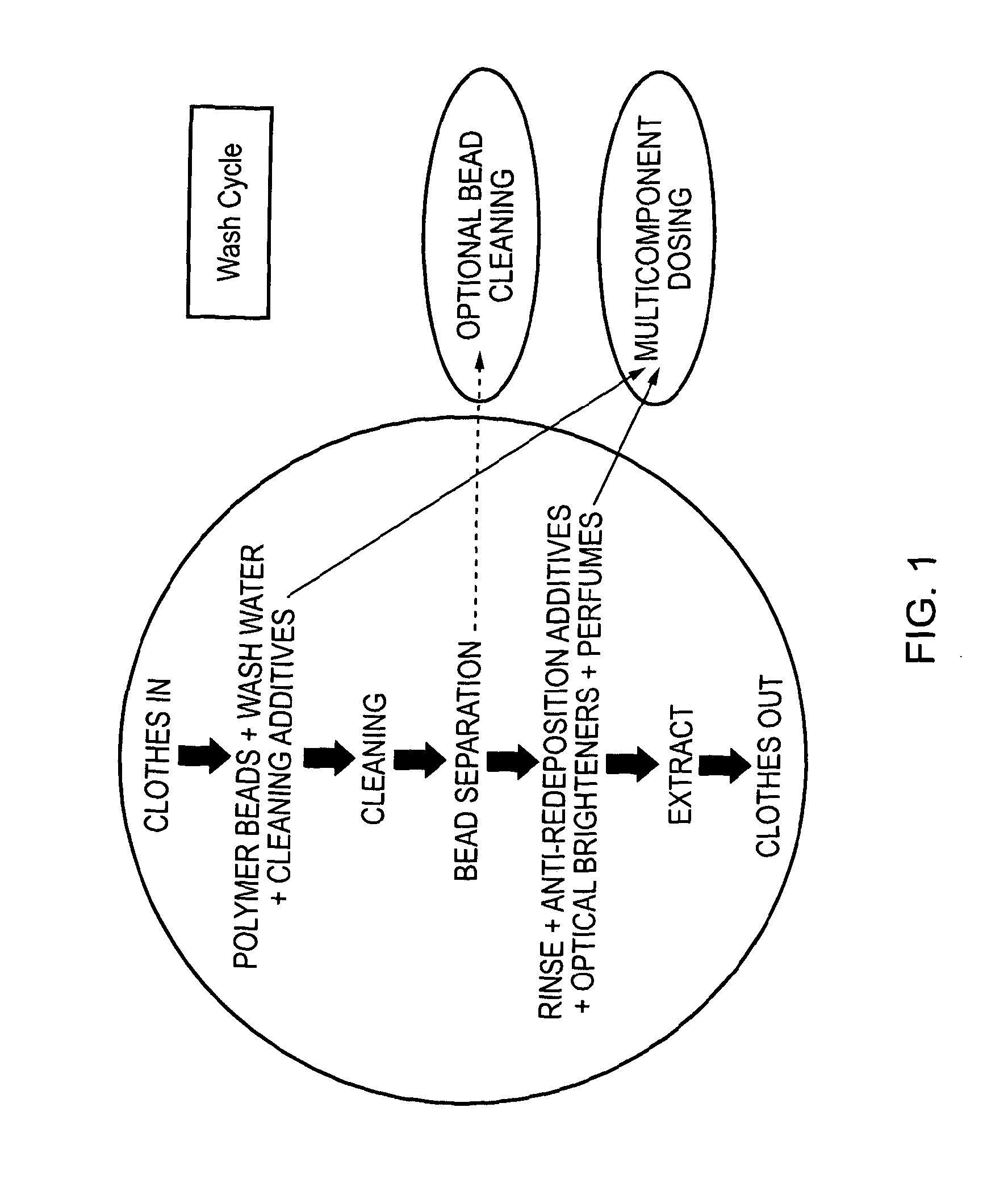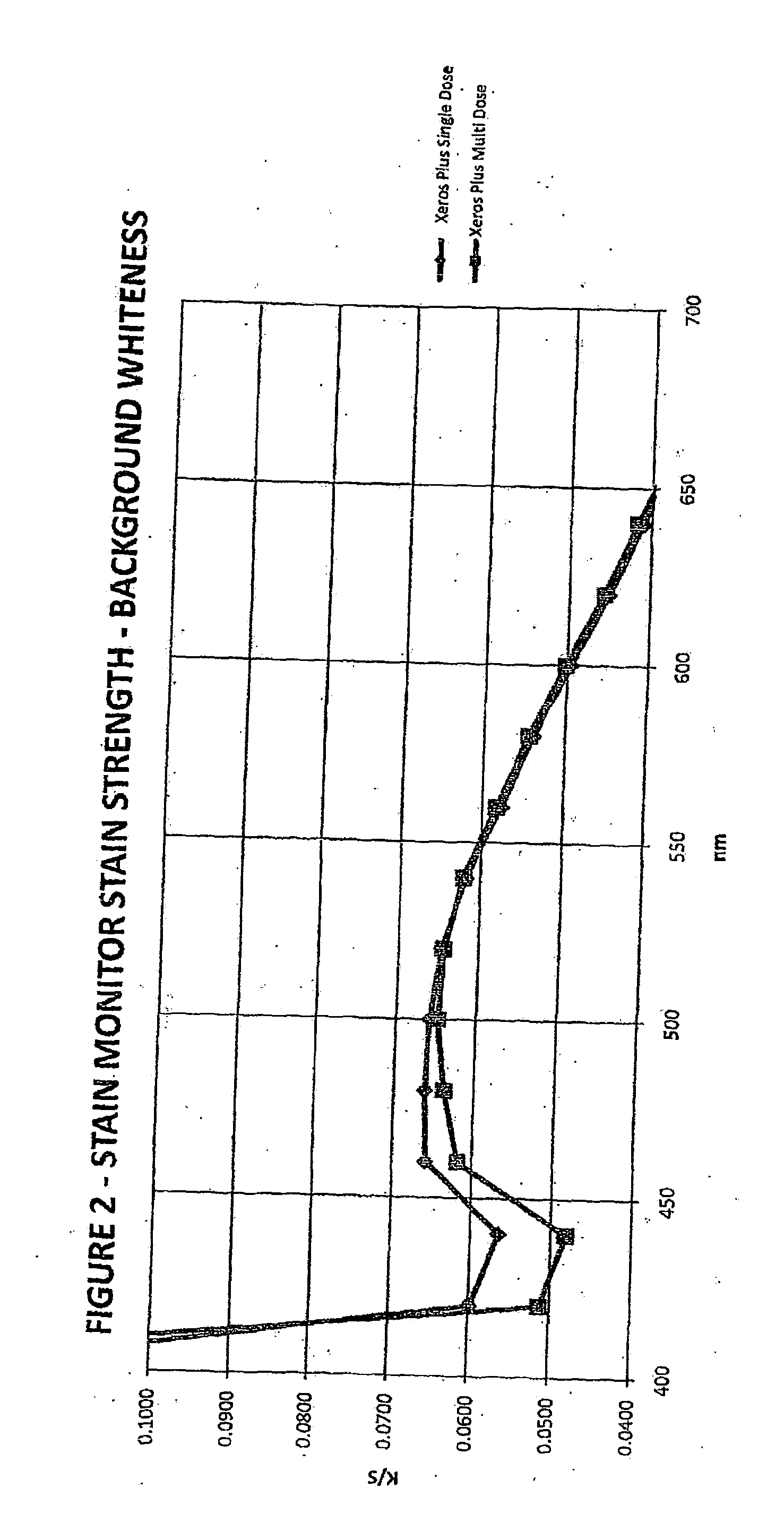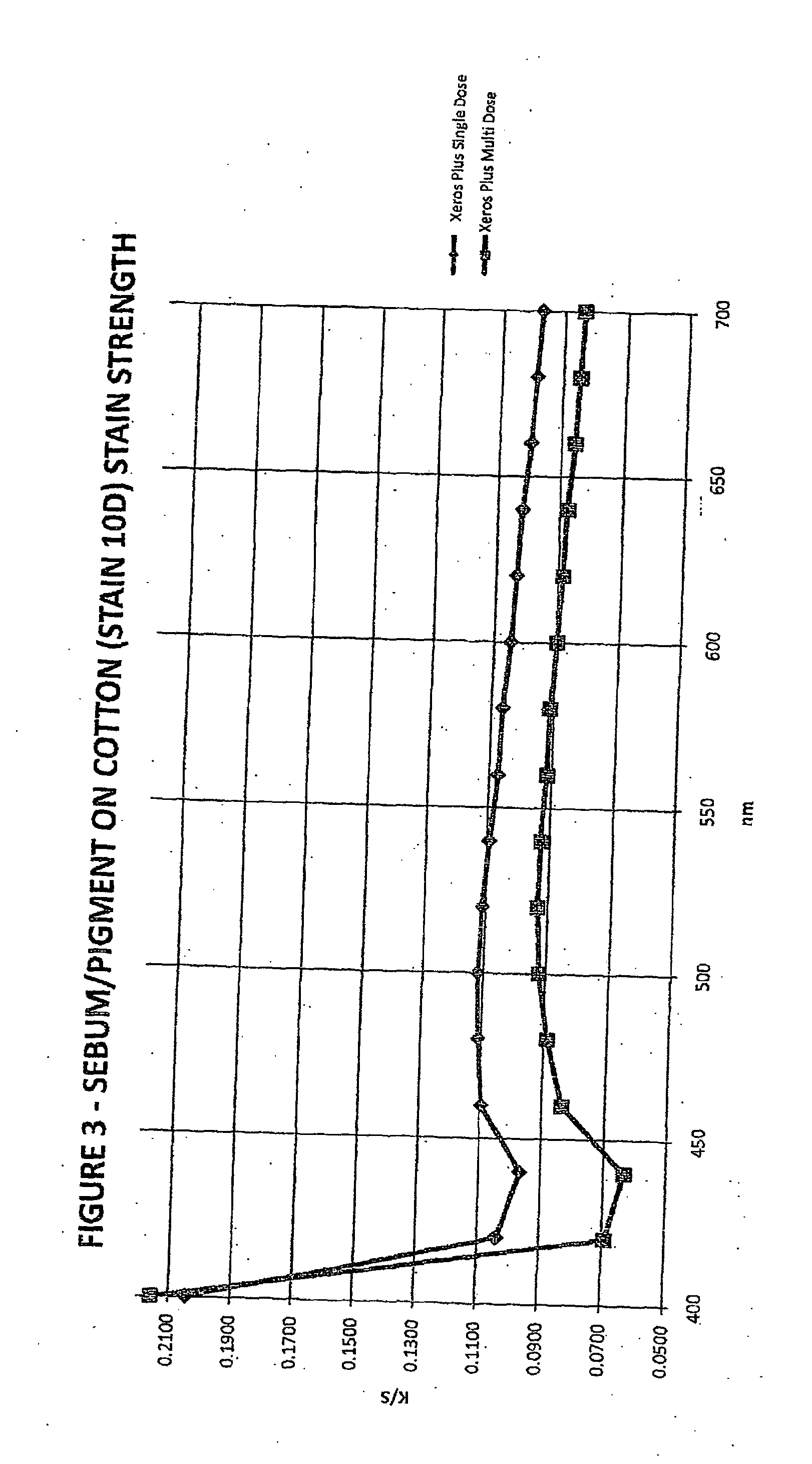Novel cleaning method
a cleaning method and substrate technology, applied in the field of substrate cleaning methods, can solve the problems of increasing the overall chemical load in the wash process, affecting the overall chemical load of the wash process, and complex forms, so as to achieve high active oxidising or bleaching chemistry, low power consumption, and low penalty
- Summary
- Abstract
- Description
- Claims
- Application Information
AI Technical Summary
Benefits of technology
Problems solved by technology
Method used
Image
Examples
example
[0048]Cleaning trials were carried out using a set of trial and control conditions (see Table 1). Thus, the trials involved the use of a preferred cleaning apparatus as described in PCT Patent Application No. PCT / GB2011 / 050243, performed according to the method of the invention (“Xeros Plus” Multi Dose), whilst the control was carried out in the same apparatus but using a single detergent dose approach wherein the detergent was added at the start of the main wash (“Xeros Plus” Single Dose). The washload in each case was an identical composition of mixed garments totalling 12 kg. The detergent components were[0049]Surfactant—Mulan 200S supplied by Christeyns;[0050]Hydrogen Peroxide (the oxidising component)—ACE B supplied by Procter & Gamble;[0051]Tetraacetylethylenediamine (TAED) (the oxidising component activator)—supplied by Warwick Chemicals;[0052]Optical Brightener—Leucophor BMB supplied by Clariant; and[0053]Perfume—Amour Japonais supplied by Symrise® AG.
Stains were added to th...
PUM
| Property | Measurement | Unit |
|---|---|---|
| temperature | aaaaa | aaaaa |
| temperature | aaaaa | aaaaa |
| molecular weight | aaaaa | aaaaa |
Abstract
Description
Claims
Application Information
 Login to View More
Login to View More - R&D
- Intellectual Property
- Life Sciences
- Materials
- Tech Scout
- Unparalleled Data Quality
- Higher Quality Content
- 60% Fewer Hallucinations
Browse by: Latest US Patents, China's latest patents, Technical Efficacy Thesaurus, Application Domain, Technology Topic, Popular Technical Reports.
© 2025 PatSnap. All rights reserved.Legal|Privacy policy|Modern Slavery Act Transparency Statement|Sitemap|About US| Contact US: help@patsnap.com



